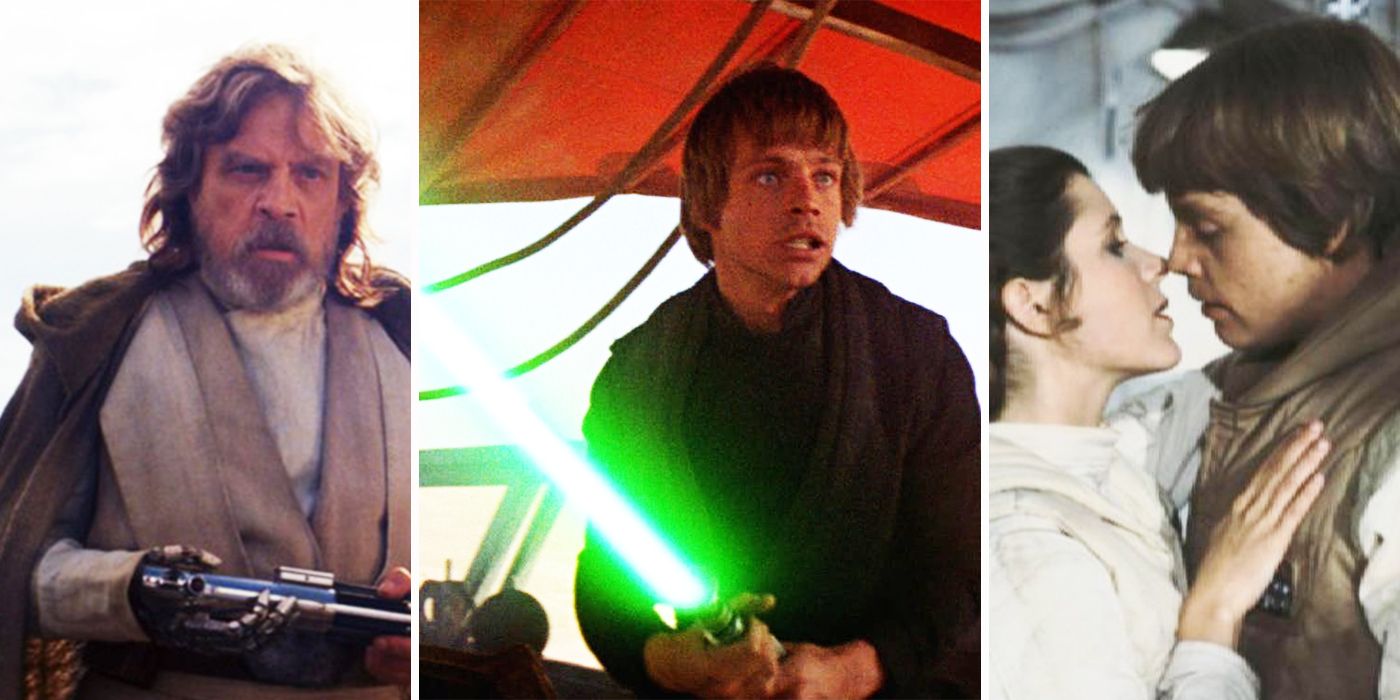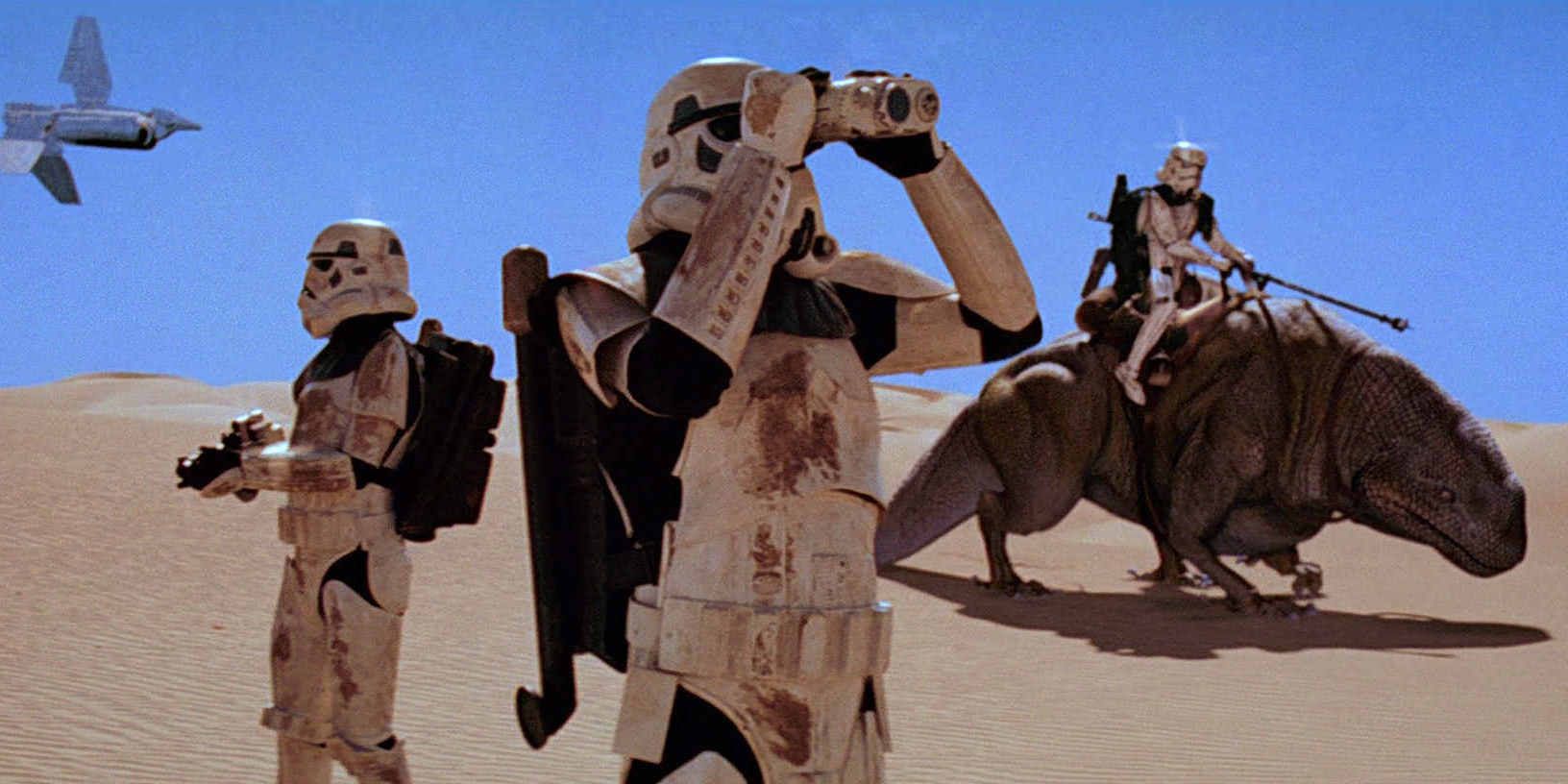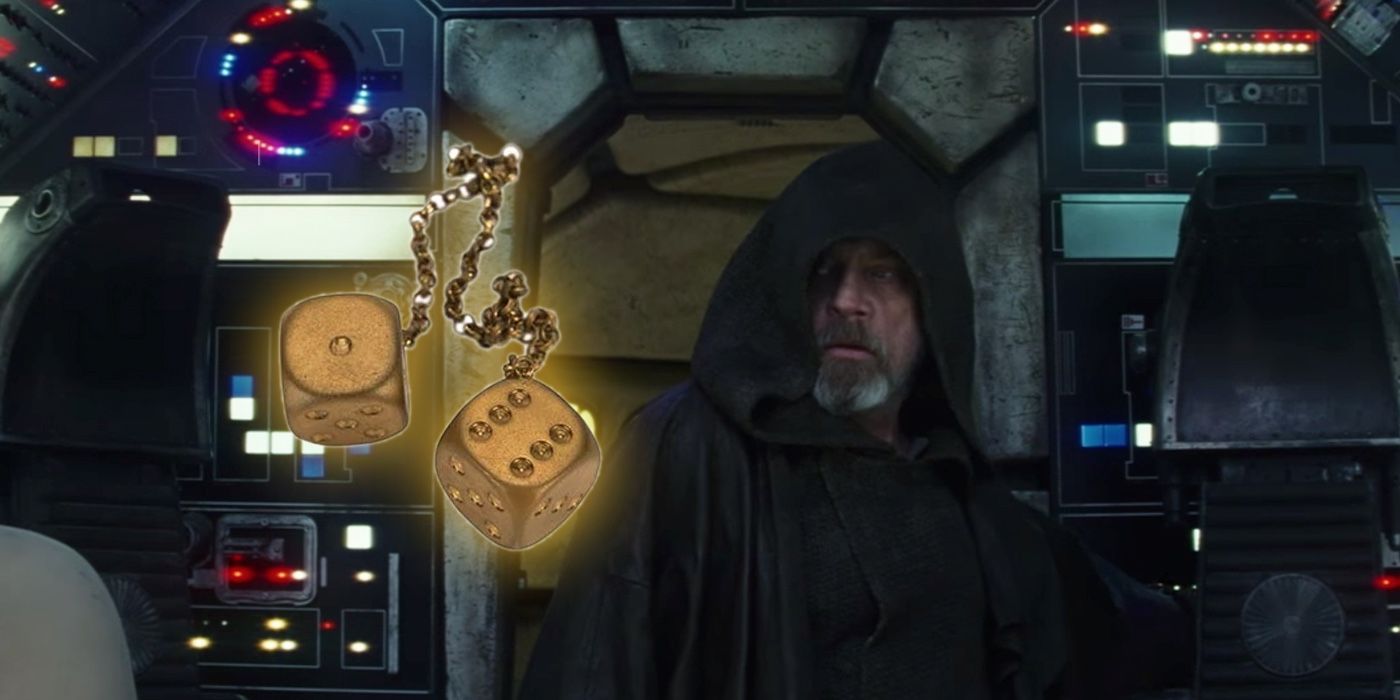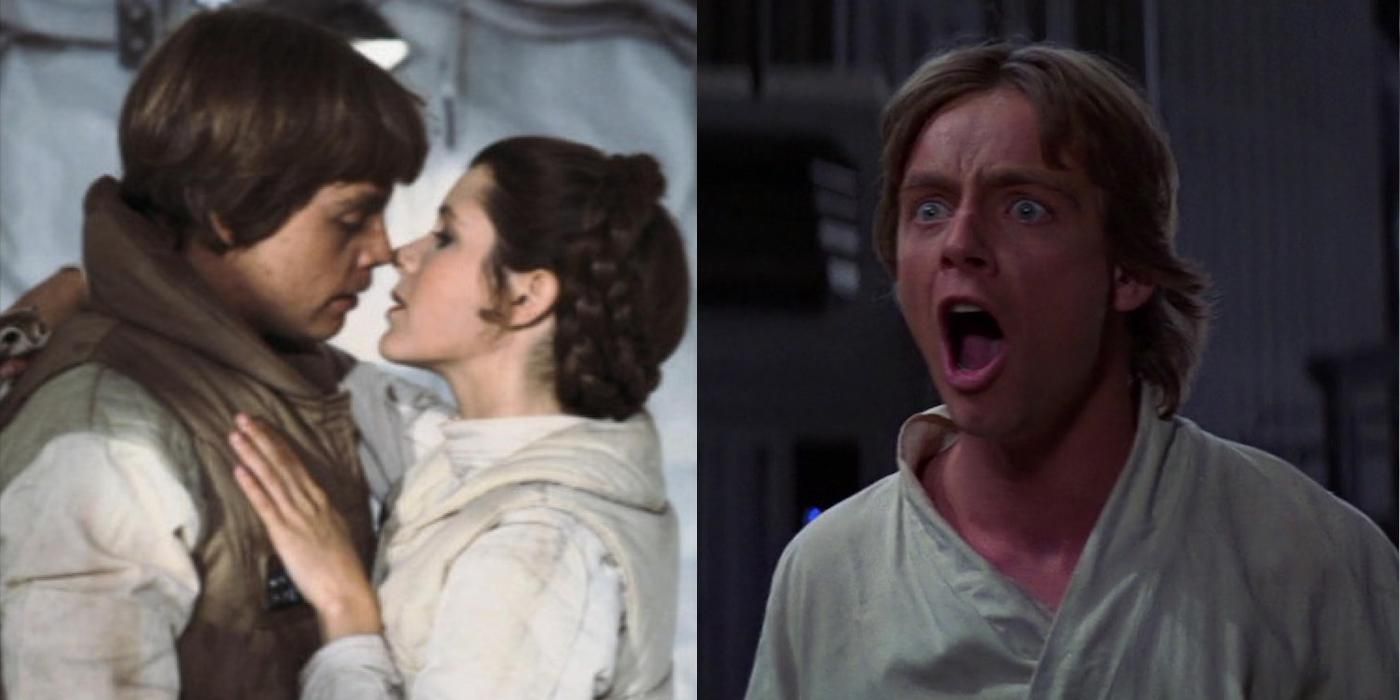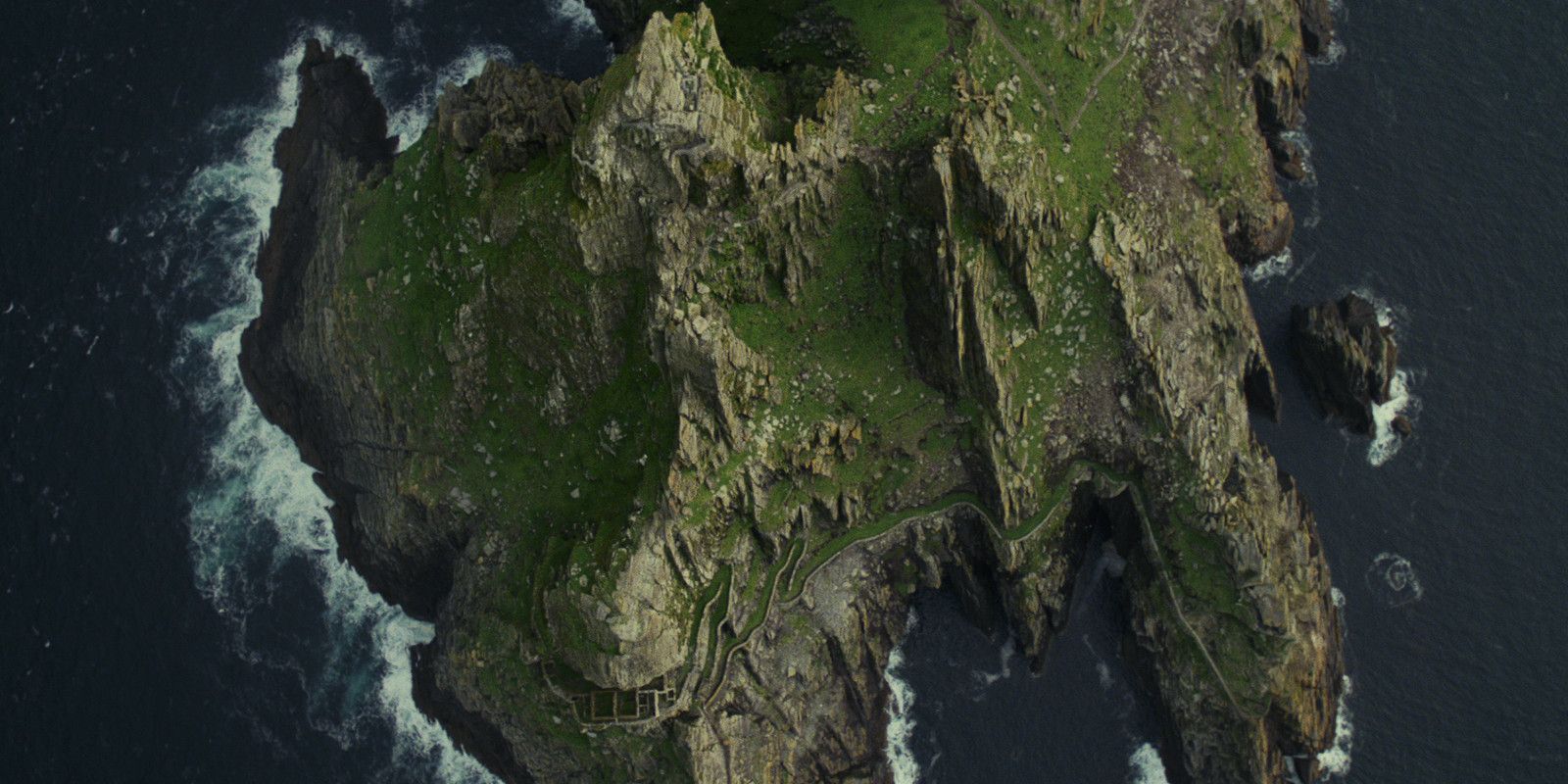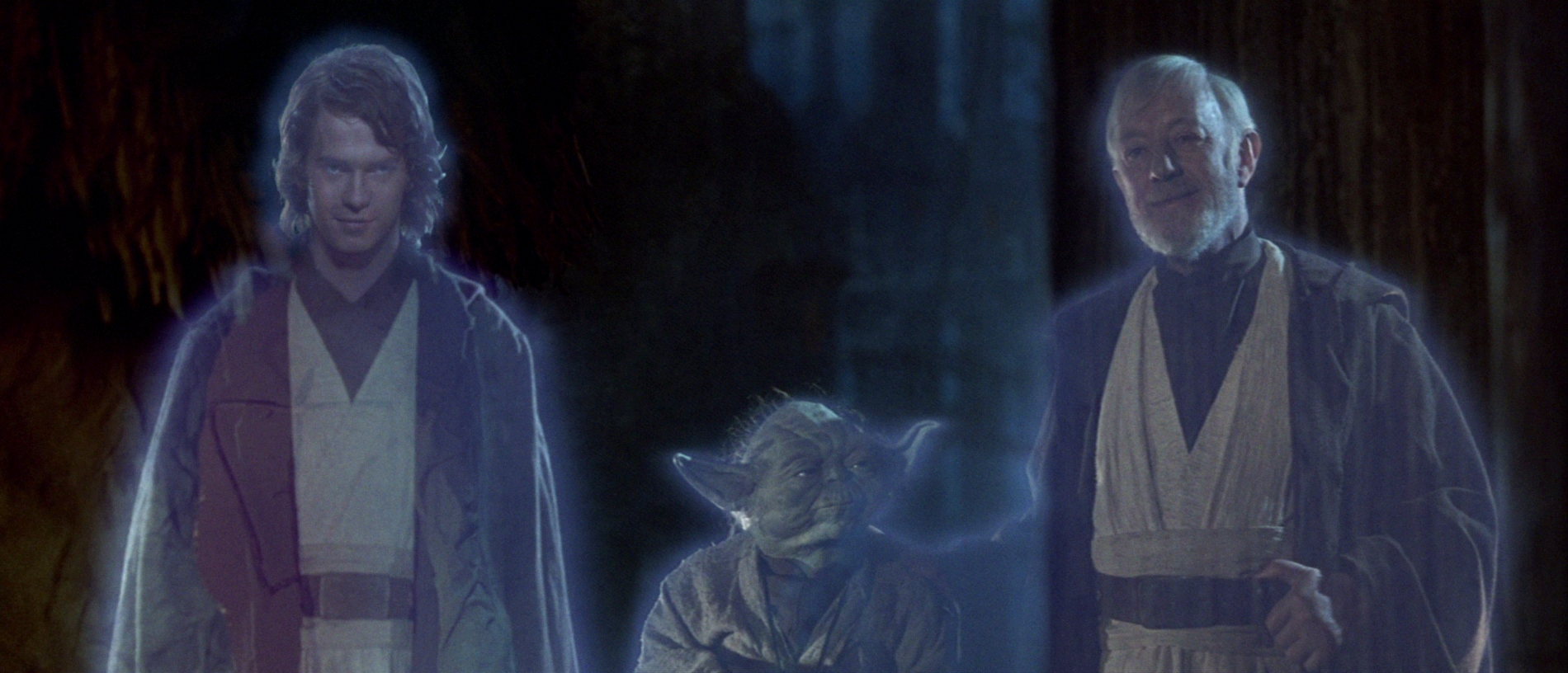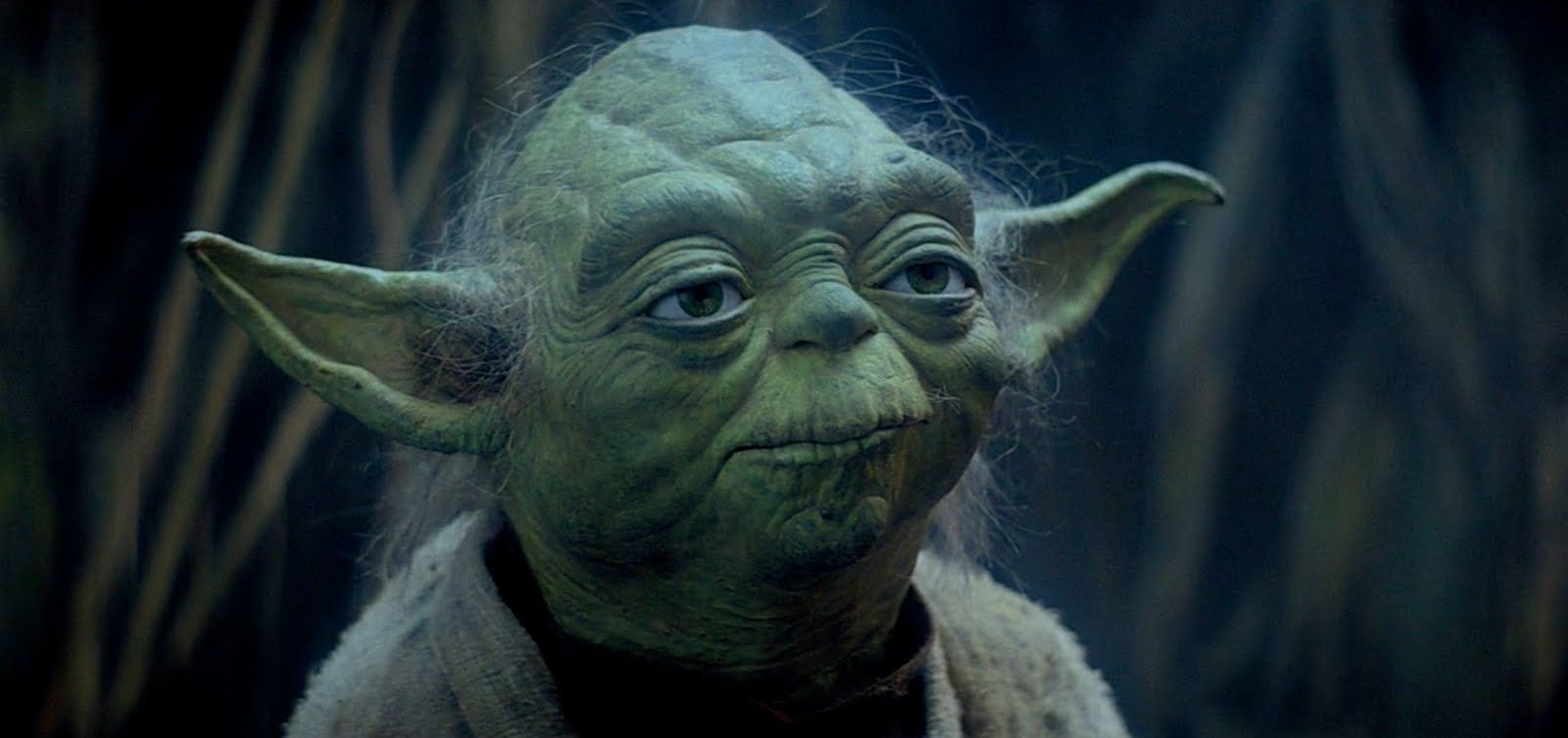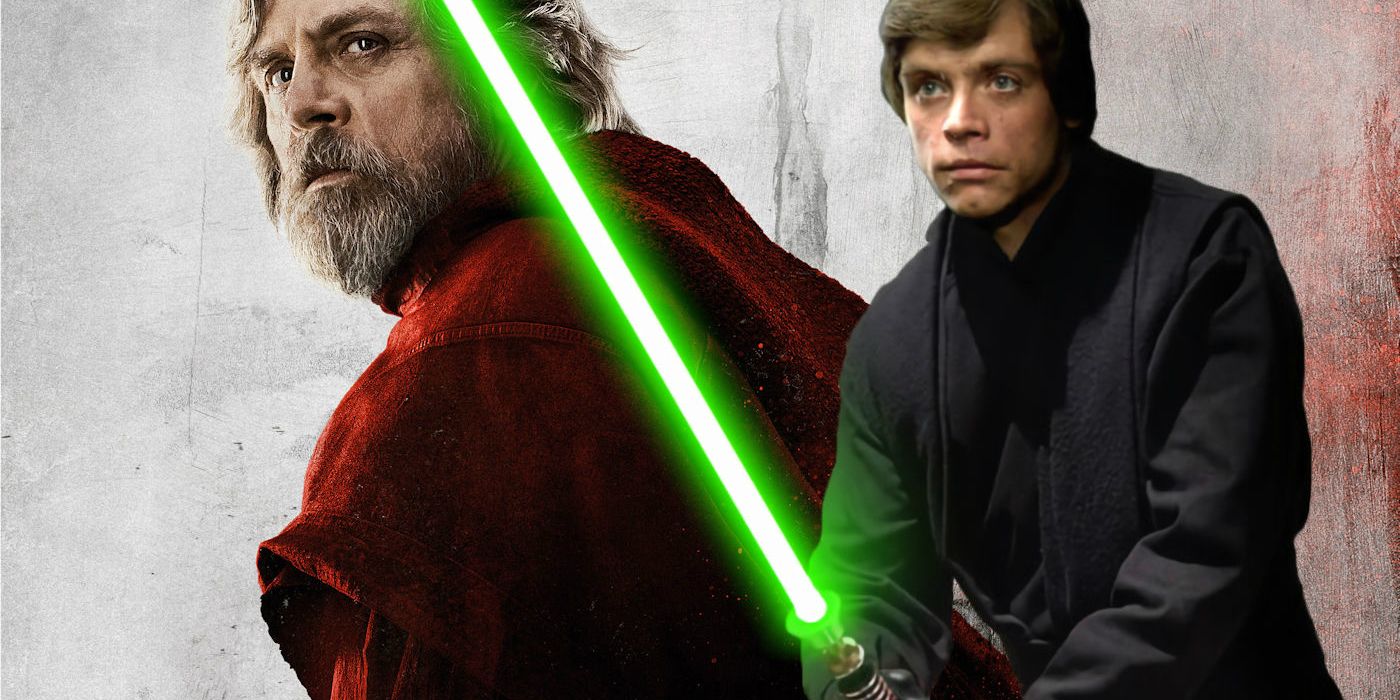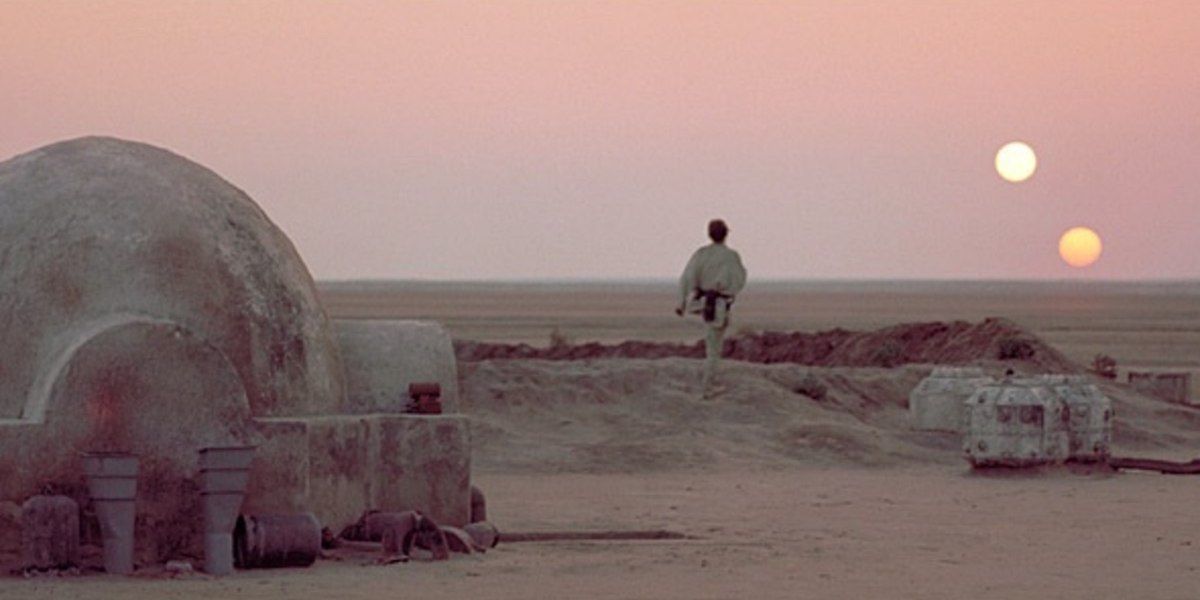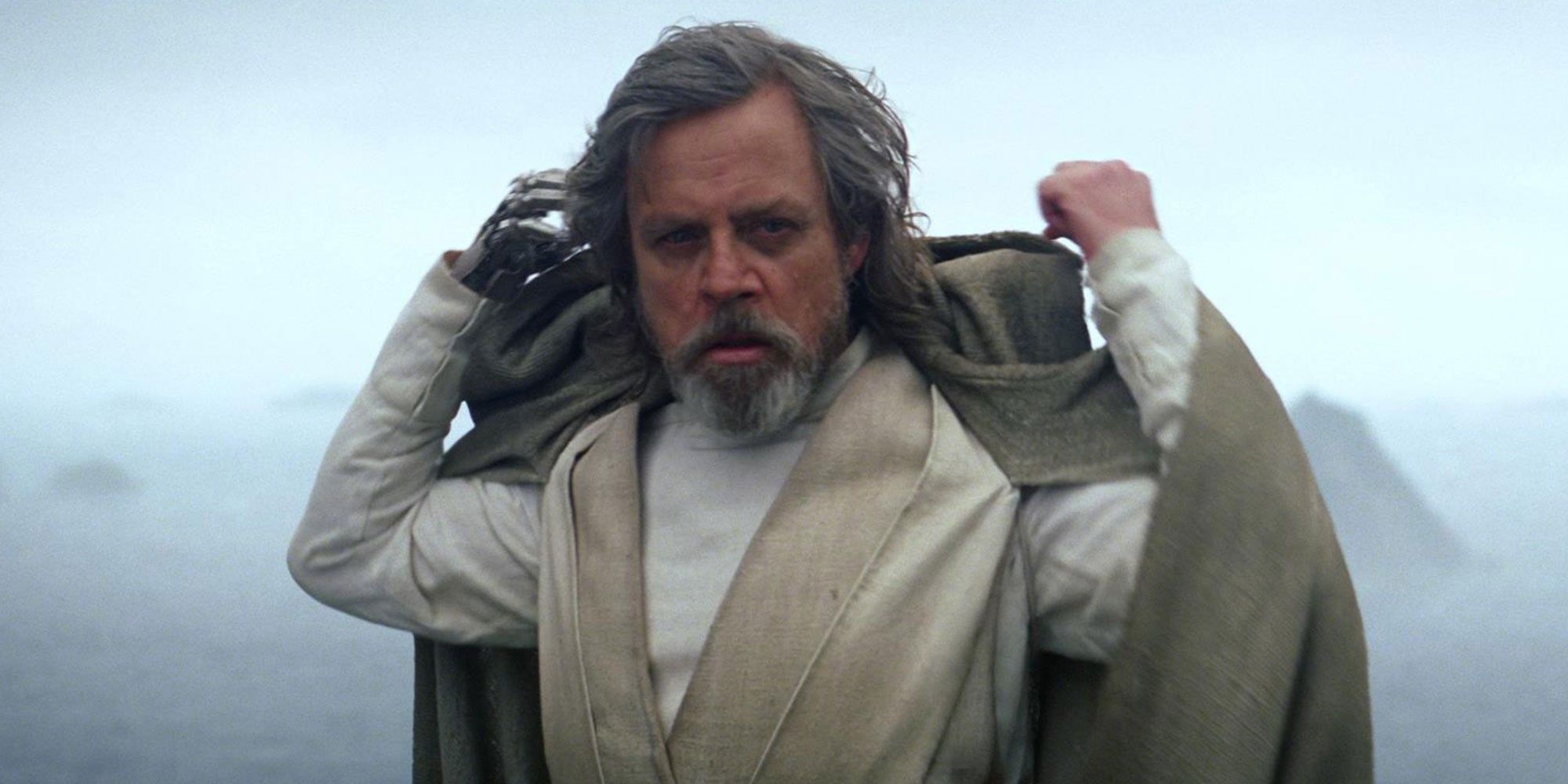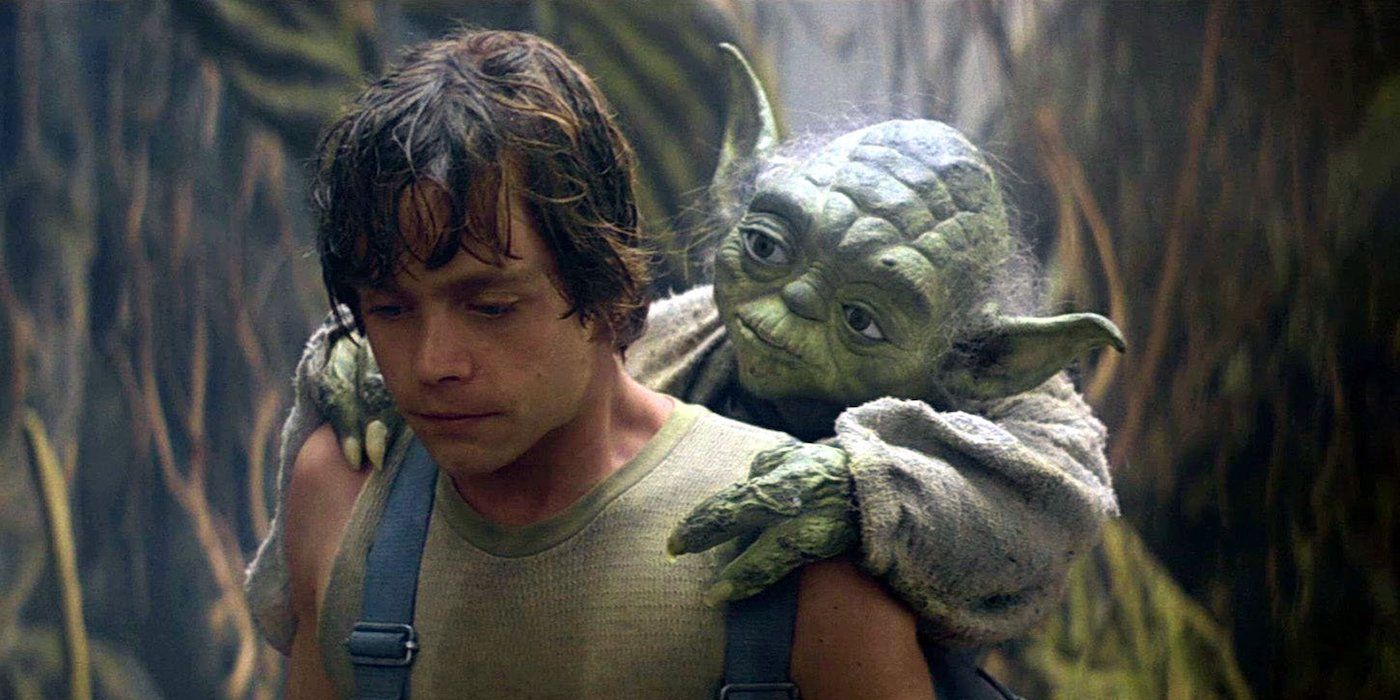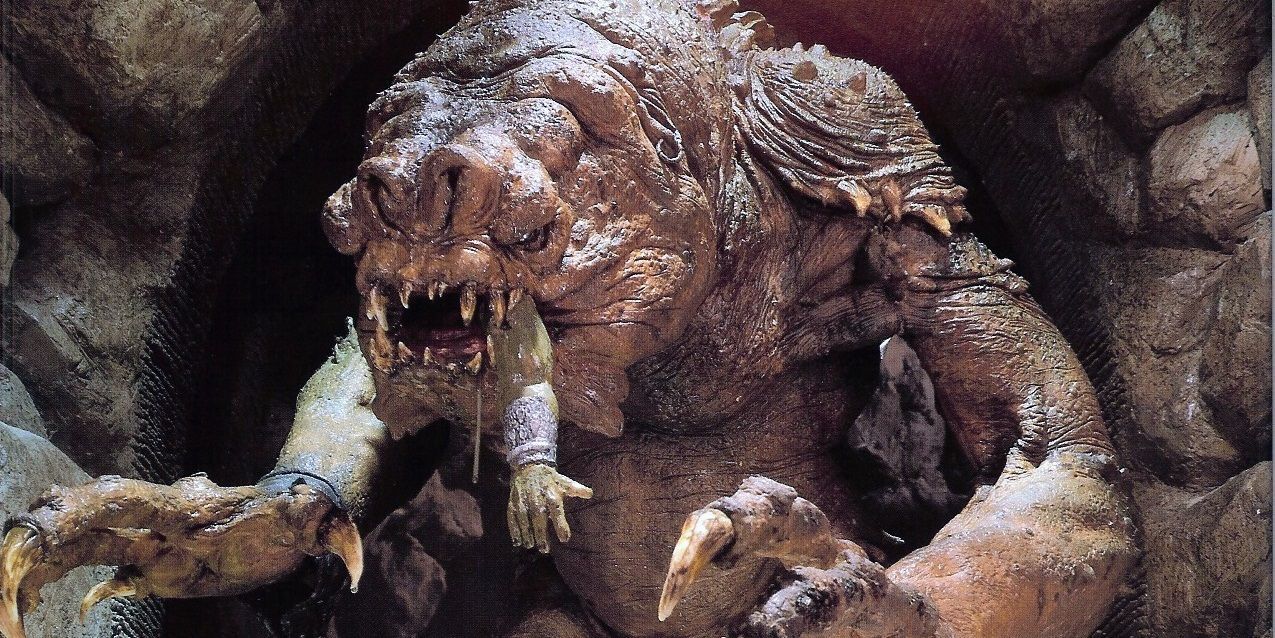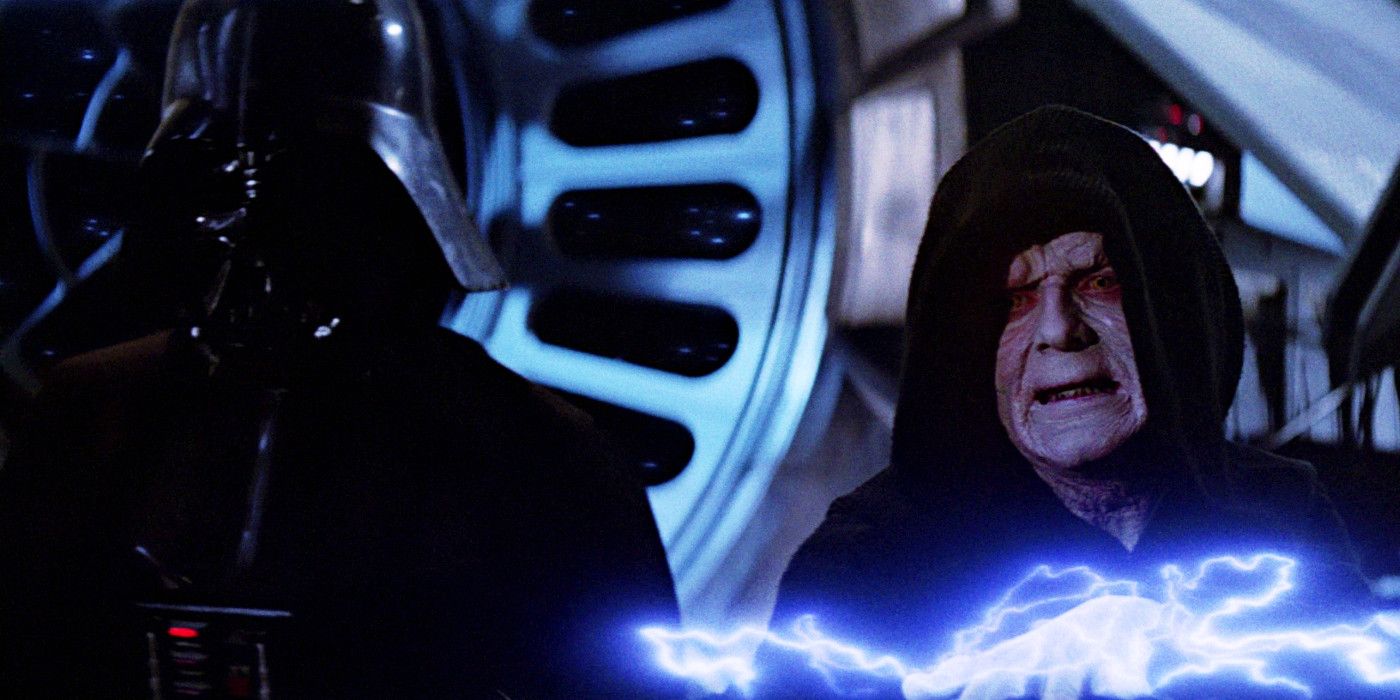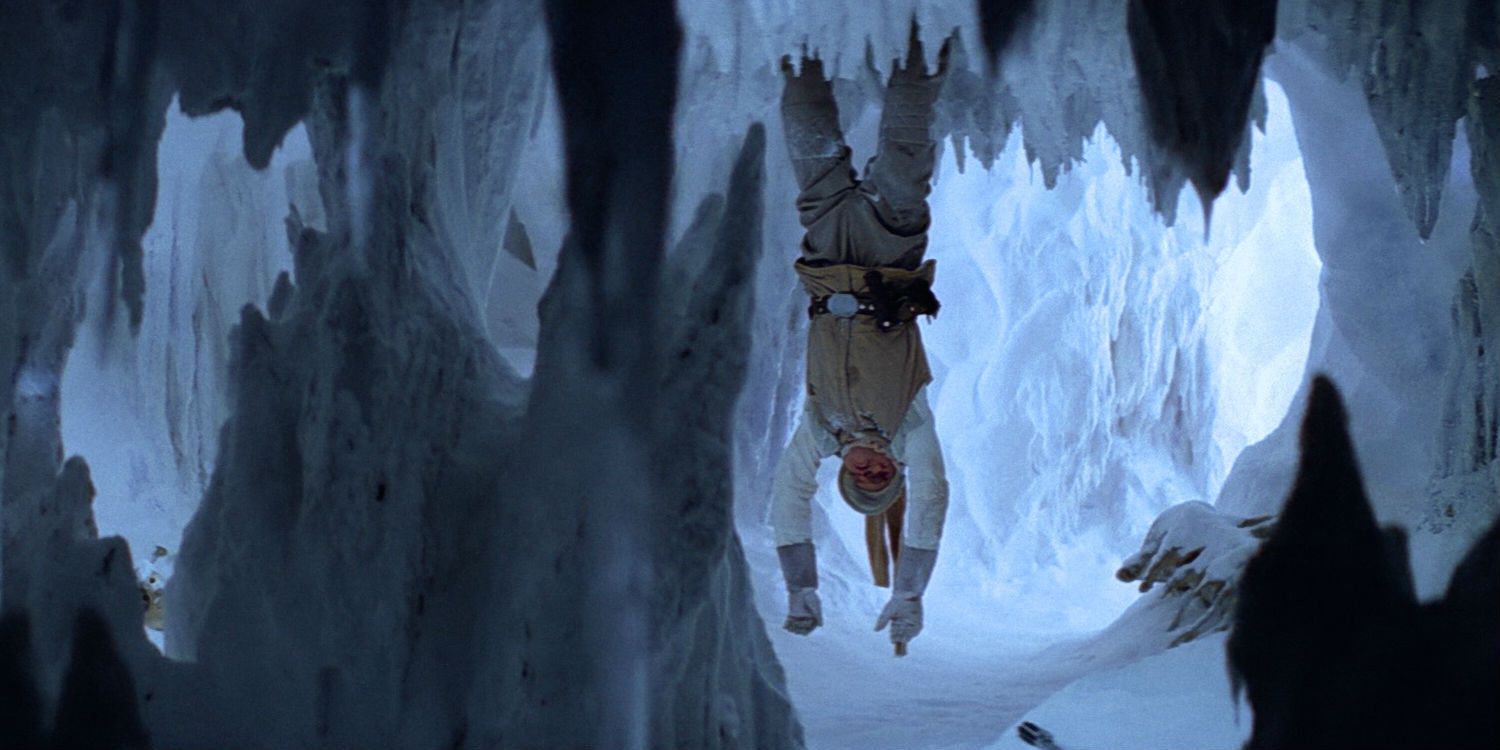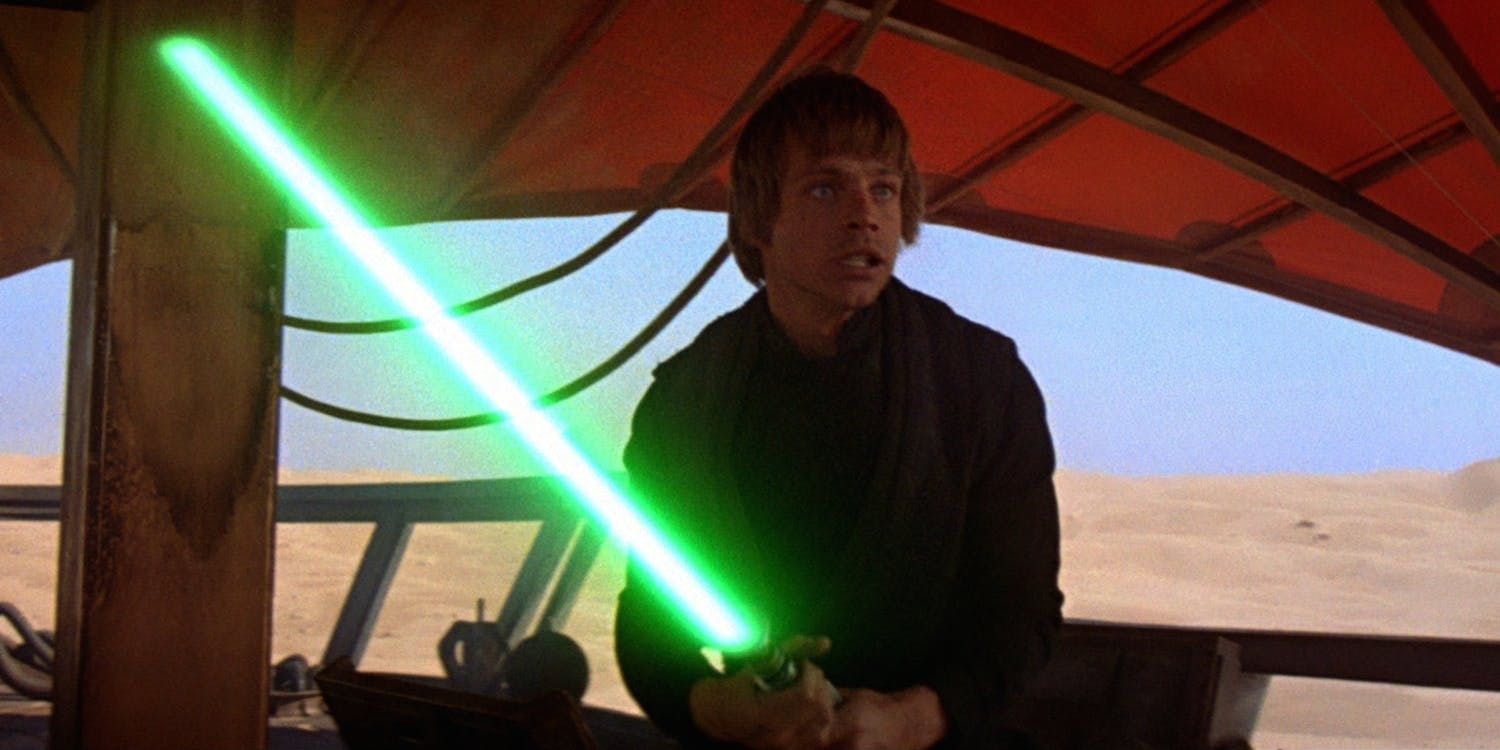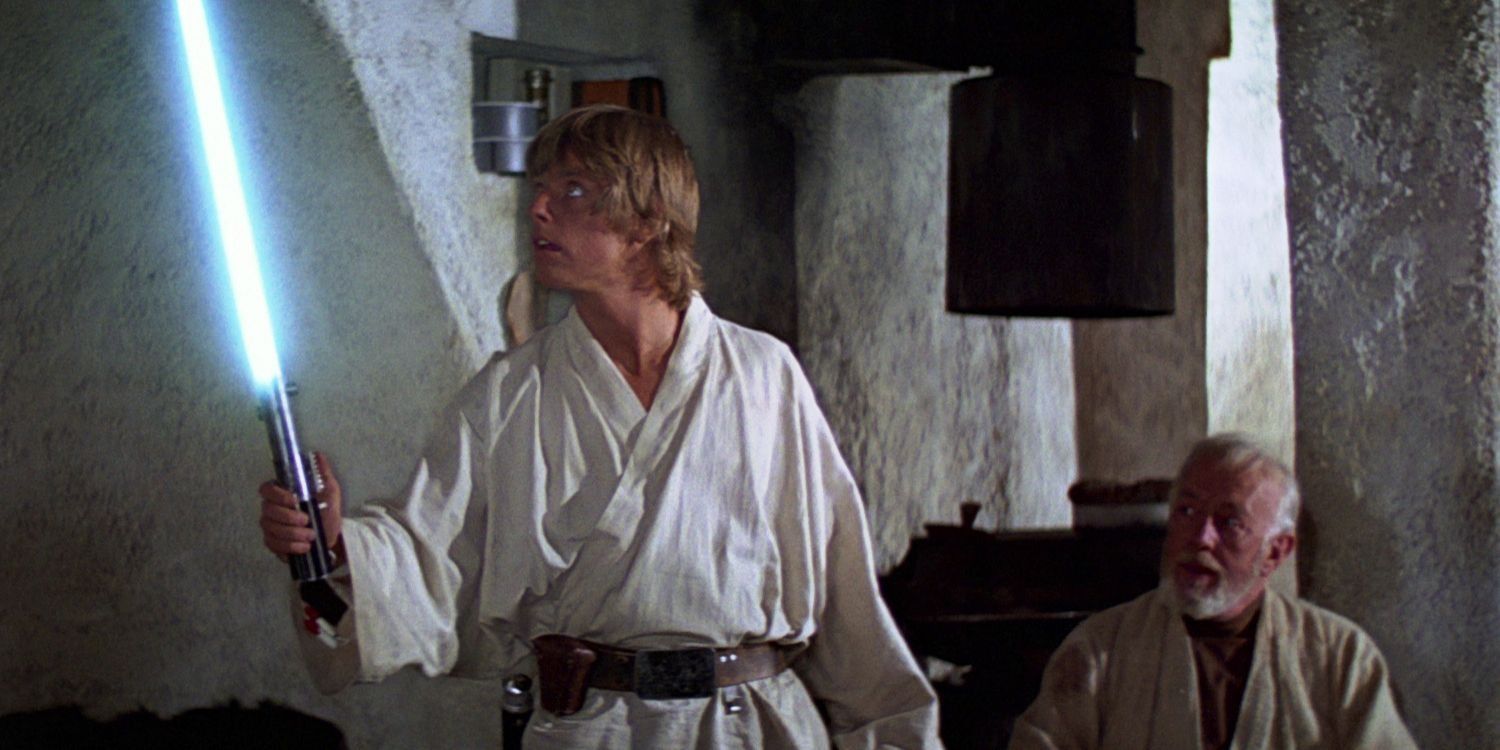The original Star Wars is an ancient story told through futuristic images. In 1949, Joseph Campbell released The Hero with a Thousand Faces, about a common "hero's journey" storyline present in all mythology. In 1975, Lucas re-discovered Campbell’s work, using the idea of a universal hero to focus his sprawling Star Wars universe around a single character - Luke Skywalker.
Luke follows Campbell's outline from the book: he leaves home on a grand adventure, faces certain evil, wins a decisive victory, and returns from his quest with new powers. While Luke’s story from the original trilogy is complex his character is simple. Like the heroes of yore — and the heroes in Lucas's other films — he is brave, selfless, and determined to complete his journey.
The Last Jedi has received both praise and backlash for its more nuanced depiction of Lucas’ hero. The Luke Skywalker we meet on Ahch-To is cynical, regretful, and hopeless. He no longer has energy of a mythological hero. Over 30 years later, Luke has transformed from an archetype in to a real person.
There are some who consider Luke’s transformation a symbol of the Baby Boomer generation. His journey mirrors that of the '60s wild idealism to 2017’s hands-in-the-air cynicism. But whatever the reasoning behind Rian Johnson’s self-pitying Luke, audiences can’t help feeling like they’ve met a new character entirely. Fair warning, spoilers ahead for The Last Jedi.
Here are the 15 Things About Luke Skywalker That Make No Sense
He Hides From The Empire In Plain Sight
Whoever was in charge of hiding Luke and Leia from the Empire deserves to be fired. Not only did they allow Luke to carry his father’s surname and live with his natural uncle, they didn’t even bother to move him off Anakin’s birth-planet.
Tatooine, while not fully under the empire’s sway, is a breeding ground for traders, smugglers, and space pilots. With every visit to Tosche Station, Luke places himself at risk of being discovered by mercenaries and informants. There was also the possibility of him learning the name Anakin Skywalker from anyone with a memory span of over 20 years.
While Skywalker could be Tatooine’s most popular surname, it's unlikely, seeing as we never meet another character who carries it. Luke’s patronymic legacy just appears to be a dead giveaway.
His Force Projection Made No Sense
While Luke’s force projection at the end of The Last Jedi made for a great twist-ending, it left plot holes the size of Exogorth lairs in its wake.
For one, while Luke couldn’t have known his lightsaber was destroyed, how did Kylo Ren believe his old master was wielding an object he himself had destroyed a few hours earlier? Even chalking this up as a mental slip on Kylo’s part, the psychology of Luke’s projection is tenuous. At a basic level, projection is a Jedi mind-trick; Luke is tricking hundreds of people’s eyes into seeing something that isn’t there.
As audiences know by now, mind tricks only work on the weak-minded. It makes sense that Luke could dupe a bunch of First Order soldiers - but what about Kylo Ren himself? Also, how did he manage to create physical dice while staying incorporeal himself?
He Couldn’t Sense His Own Sister (Even While Kissing Her)
Force-sensitives have an automatic connection with other Force-users, even across the light/dark divide (as evidenced by Kylo Ren and Rey’s long-distance encounters in The Last Jedi). If Luke wasn’t able to detect that Leia was his sister, he should have at least felt a twinge in the Force when meeting her, and certainly when they were snogging.
The shortest answer to why Luke kissed his sister, however, is that she wasn’t his sister - at least in the writers’ minds. That’s right, Lucas and the gang most probably developed the twin plot line after the Empire Strikes Back, which explains this plot-hole among others.
While Game of Thrones may have desensitized modern viewers to incestuous relationships, it never would have passed for 1980s family sci-fi.
His Reasoning For Self-Imposed Exile
The Luke Skywalker we meet in A New Hope is loyal, idealistic, and brave to a fault. By the time Return of the Jedi rolls around, Luke is more haggard, but retains that fundamental heroism. Even after the physical and emotional trauma he suffers at the hands of Darth Vader, we could never imagine Luke allowing his friends to face danger alone.
So what changes between the celebration on Endor and the Luke we see in The Last Jedi? Luke associates his hermetic retreat to failing as Kylo Ren’s mentor, but the reasoning rings false.
Two wrongs don’t make a right and abandoning the Rebel cause hardly atones for the Jedi’s errors as a teacher. Luke’s self-imposed exile to Ahch-To reeks of self-pity, cynicism, and even cowardice that the young lad we met on Tatooine would never contemplate.
He Recognizes A 20-Year-Old Version Of His Father
In the final scene of Return of the Jedi, Luke sees a trio of Force ghosts: Obi Wan, Yoda, and a younger version of Anakin played by Hayden Christensen. Luke’s satisfied smile implies he recognizes all three - despite only having seen his father’s older, mutilated face one time.
The ever-mysterious force can close as many plot holes as it opens. There is the argument that Luke is able to sense that this man is his father even if he doesn’t recognize. However, wouldn't he have then had that reaction when he first met Vader? Luke has no idea that Darth Vader is his family until he is told.
Alternatively, Luke thought Yoda and Obi-Wan had brought a random friend from the afterlife, and he just wanted to be polite.
He’s A Late Bloomer
The Jedi Council almost denied Anakin Skywalker training because of the boy’s age. When considering Anakin was only nine, it makes little sense that Yoda was comfortable with training a 20-year-old Luke.
The rationale behind starting training early is, presumably, that young Jedi start mastering the force before developing strong attachments to family and friends. Yet Luke, who literally witnessed the burning skeletons of his adoptive parents, becomes the ideal Jedi: selfless, righteous, and brave.
Rey also begins her training at around 20, and does a pretty decent job at saving the universe. Perhaps the Jedi should have reconsidered their age admission policy a long time ago. They seem to greatly benefit from recruiting adults with demonstrably solid characters, instead of indoctrinating children.
Contemplating Kylo Ren’s Murder
The Last Jedi sees Luke Skywalker hover over Kylo Ren’s bed, preparing to slaughter his apprentice and nephew. Even though Luke changes his mind, the impulse itself is seriously out of character - or at least the character presented in the original trilogy.
Murdering one’s sleeping kin in cold blood has to be as evil as anything Kylo Ren has ever contemplated and it’s unclear how Luke could consider the act while still thinking himself part of the light side.
Luke’s justification, that Ren would eventually cause immense damage, is ironic considering how much faith he put in Darth Vader’s redemption. Why was Luke certain he could turn a Sith commander who had murdered millions to the light side, but was unwilling to place the same bet on an impressionable teenager?
He Recovers From His Adoptive Parents’ Death In An Hour
In A New Hope, Luke returns home to find the smoldering remains of his aunt and uncle, most likely murdered by Stormtroopers for refusing to reveal their nephew’s location. Luke surprisingly appears relieved. He is finally free to leave Tatooine, and begin his adventure as a space pilot.
This isn't to imply that the movie should have focused on Luke’s five stage grieving process. Star Wars is an adventure story, not a drama, but Luke could have at least mentioned his adoptive parents’ death once or twice after the fact. It could have served as his main motivation for joining the Rebellion, as most members had lost family to the Galactic Empire.
Luke’s odd lack of attachment is only dwarfed by Leia’s apathy to the destruction of her home planet, Alderaan. Perhaps some type of sociopathy runs in the family.
His Awful Hiding Place On Ahch-To
In The Last Jedi, Luke reveals that he has lost his connection to the Force along with his respect for the Jedi Order. However, why then did he choose to hide in the birthplace of Jedi philosophy?
For someone who is trying to escape his past, Luke chose the worst possible spot; every monument and artifact is in some sense a reminder of the ethos he chose to abandon and the order he failed.
Luke’s choice of hiding place was also supremely selfish. If the Rebels could locate him, it’s possible the First Order could have as well, delivering the Jedi’s ancient wisdom straight into Snoke’s hands. We’re not exactly sure what the island’s sacred texts contained, but we can be sure the Sith would have put them to destructive use.
He’s An Extremely Quick Learner
Not only was Luke a late bloomer, by Jedi standards, but he was also a ridiculously fast learner. Luke’s training takes as long as Han and Leia’s trip from Hoth to Bespin.
While it’s unclear exactly how long that is, given the Falcon’s hyperdrive is busted, we can assume between a week and a couple of months. Even at the long end of that range, Luke completed his preparation in a fraction of the Jedi’s usual training period. The counterargument is that Luke received his instruction from one of the most powerful Jedi of all time, Master Yoda, who could bring 900 years of experience to the forefront.
The training may also have been more intensive than the Academy’s usual regime, like a Jedi bootcamp with constant one on one attention. When factoring in Luke’s natural abilities and introduction to the force by Obi-Wan, things start to appear more plausible.
He Forgets How To Use The Force
Luke’s battle against the rancor has to be one of the original trilogy’s silliest moments. Luke is apparently so frightened by the giant beast he forgets how to use the Force.
His first reaction, instead of hurling a boulder or using a Force-push, is to grab a giant bone. He hardly needed Yoda’s training to think of that. When Luke eventually defeats the rancor by crushing it with a large gate, he still doesn't use the Force to push the button.
Alternatively, he picks up a skull and throws it to activate the switch. He could have done the exact same thing with the Force, eliminating any chance of him missing his throw. Overall, hardly the type of performance you want to see from a man who hopes to bring down the Empire.
He’s Immune To Force Lightning
Emperor Palpatine received his horrifying disfigurement at the hands of his own Force lightning while he was fighting Mace Windu. However, when Palpatine applies the same attack to Luke, the young Jedi walks away without so much as chapped lips.
Perhaps the Sith Lord is able to control the power behind his lightning and chose "torture" instead of "disfigure" mode when targeting Luke. The answer isn’t completely satisfying, given his total desiccation in just a few moments of exposure, and the amount of time Luke writhes under the bolts.
Ultimately, the films needed a way to explain Palpatine’s transformation from kindly-looking old man to parchment-skinned monster. Mace Windu being responsible for the disfiguration is also a nice way to give the character a real sense of purpose before his demise.
He Can’t Think In The Snow
In The Empire Strikes Back, Luke faces down a ferocious wampa on Hoth. After grabbing his lightsaber with a slick Force pull, the blossoming Jedi takes off the beast’s arm, leaving it howling in pain - so far, so good. What’s less explicable is Luke’s decision to run away from his bested foe into a raging blizzard.
The wampa’s cave, though not quite the Ritz-Carlton, would still be far safer than Hoth’s open tundra. Luke could have also skinned the beast at his leisure and used its hide as a blanket which would be a lot cleaner than hiding out in a Tauntan’s stomach.
In all fairness to Luke, he grew up on the intergalactic equivalent of Nevada and the cold may have go*t to his head.
His Terrible Plan To Rescue Han Solo
Luke’s plan to rescue Han Solo from Jabba’s palace is most kindly described as a work in progress. It begins with Lando Calrissian posing as a palace guard, presumably relaying back information to Luke (although not about the massive trapdoor in the middle of the throne room).
Next came the droid bartering: C-3PO and R2 offered in exchange for Han Solo. But what if Jabba had accepted them and handed over Han Solo? Not only would Luke have betrayed his two closest mechanical friends into slavery, he would also have lost the lightsaber hidden in R2’s compartment.
Then Leia toddles in disguised as a bounty hunter and winds up in need of rescue herself. The whole thing seems a bit convoluted considering the final step in Luke’s master plan is just to tear everyone to shreds with a lightsaber. The crew would have probably been better off just marching in together and attacking the throne room with a full frontal assault.
He’d Never Heard Of The Force Or A Lightsaber
Apparently everyone in the Star Wars universe has a 20 year limit on their memory. When Obi Wan tells Luke about the Jedi it’s like he’s explaining an ancient civilization. In reality, Order 66 had occurred a mere 19 years earlier.
Considering the Clone Wars affected nearly every corner of the galaxy, Luke’s ignorance of the Jedi is something like a European teenager not knowing the basic facts of World War II.
Granted, the Empire must have attempted to stamp out the Jedi’s legacy, but how could even the most powerful of fascist regimes control discussion and remembrance of a war that affected countless inhabited planets? At the very least, Luke must have caught some snippets of history from drunk space pilots who had lived through the events.
---
Did we miss any other Star Wars inconsistencies with Luke Skywalker?

